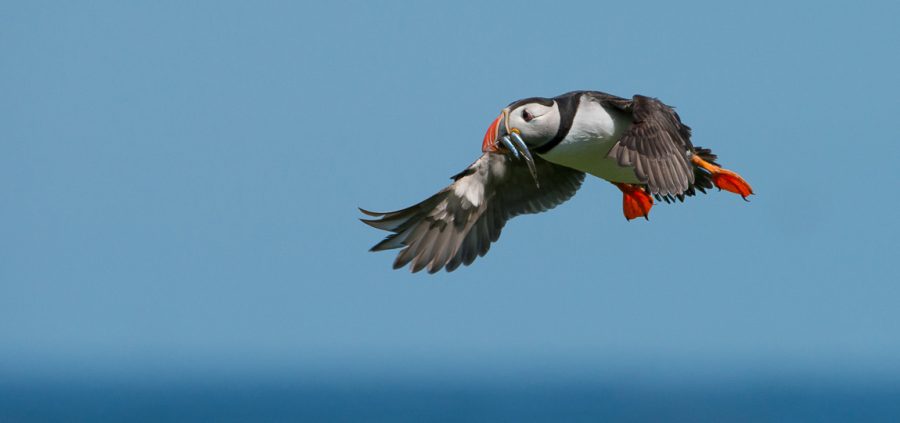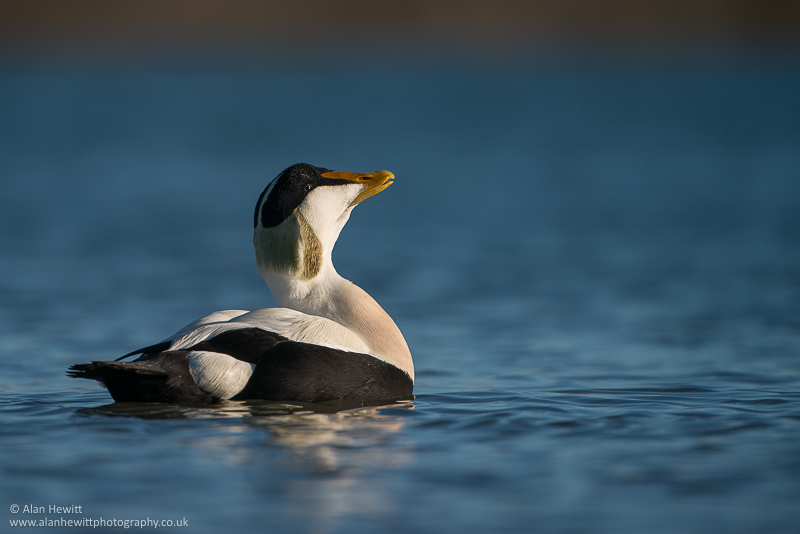Farne Islands Puffin Photography: The Galapagos of the North

Approaching the jetty on one of the Farne Islands is an experience a wildlife photographer will never forget. Although I have made the trip so many times that I have actually lost count, I still feel the anticipation and excitement about the puffin-tastic photographic opportunities awaiting me. I’m always in absolute awe at the sights and sounds of so many thousands of seabirds. It is a thrilling experience, thanks to the thousands of puffins, which earns the Farne Islands their affectionate nickname: ‘The Galapagos of the North’.


The Farne Islands are situated a few miles off of the Northumberland coast, in the UK, and are accessible by boat from the coastal village of Seahouses. During the spring breeding season they become the temporary home to thousands of guillemots; razorbills; fulmars; kittiwakes; Arctic, common and sandwich terns; eider ducks, shags and undoubtedly the star of the show: Atlantic puffins. With such a high concentration of seabirds competing for food and nesting space, the Farne Islands are a wildlife photographer’s paradise.
Due to their global ecological importance, the Farne Islands are classed as a National Nature Reserve. Visits are carefully managed by National Trust wardens to promote a sustainable balance between conservation and tourism. It comes as no surprise that the islands are extremely popular with photographers and bird watchers, as well as casual day trippers. Time on the islands is therefore limited and as there is so much to photograph I’ve put together this guide to show off the beauty of the Farnes and help you plan your visit.
Plan Your Visit
A day on the Farne Islands begins in the seaside village of Seahouses where you arrange and book your boat transport. Various trips leave throughout the day, from ‘sail arounds’ to landing trips on both of the accessible islands. Staple Island is open in the morning and Inner Farne in the afternoon. During the peak of the June breeding season, it can get very busy so I would advise booking ahead to avoid disappointment.
I recommend visiting both islands as their ecology and terrain offer different opportunities for photographers. Inner Farne has a lot more foliage which attracts thousands of nesting terns and a greater concentration of eider ducks. Terns are few and far between on Staple Island and the terrain is a lot rockier. Puffins? They are just about everywhere once you are on the islands.
My personal recommendation is to book up with ‘Serenity Farne Islands Tours‘. Skipper Andrew Douglas sails a custom built catamaran which he manoeuvres with great skill around the islands. The vessel offers a very stable 360 degree platform which is ideal for photographing the frenetic cliff face action. Andrew is a keen photographer himself, he knows what photographers want and he’ll always try do what he can to accommodate their wishes.
After boarding one of the boats it isn’t long before the wildlife sightings come thick and fast. There are usually a few female Eider ducks with a ‘creche’ of chicks in the harbour. Hungry gulls are usually circling above them on the look out for an unaccompanied chick. Males can be seen in and around the harbour too, but are more numerous on the seas outside the harbour. Keep a look out for the drakes with their striking dimporhism, they are a lot more photogenic than the female.
It won’t be long before you see puffins, guillemots and razorbills rafting together or skimming across the surface of the sea, seals bobbing up and down and gannets and terns plunge diving for fish. Most of the trips involve a ‘sail around’ around the different islands before landing. For the un-initiated this is a wonderful experience. The noise increases as you get closer and the smell, it is absolutely unmistakable! Over the years I’ve personally become increasingly enthusiastic about photographing the packed cliff face habitats where nearly every possible ledge is occupied by a nesting pair of squabbling fulmar, guillemots, razorbills or kittiwakes. If you wish to sit down on the boat, try to find a seat around the sides of the boat to give yourself a good view.
Photography Kit to Bring to the Farne Islands
When I’m on the Farnes doing my own photography I always like to carry two camera bodies, one with my telephoto attached and the other with a versatile wide angle to mid range zoom. I often find myself switching between the two cameras quite rapidly and repeatedly changing lenses can mean missing out on some of the action. You never know when a pod of bottlenose dolphins are going to pop up! If you are using a long and heavy lens it is worth taking a tripod or monopod. Just take care with the tripod legs, especially on Inner Farne as the terns nest very close to the wooden boardwalks. I avoid using a tripod on the boat as the vibrations from the engines cause a lot of camera shake. I’ve seen a few people using beanbags on the boat rails which can be a good idea (just make sure they are tied on!) but I prefer to be mobile and move around the boat. Don’t forget, camera straps are there for a purpose. One knock or slip and your camera could be bound for the depths of the North Sea.
On the islands there is something for photographers with all kinds of kit. You can get very close to some of the birds and wider angle photographs showing the birds in the context of their environment can be as effective as the close up shots more traditionally associated with wildlife photography. If you are looking to capture the birds in flight as they return to their nests or burrows I recommend a telephoto lens of at least 300mm focal length. By the way, puffins nest underground in burrows… you knew that right?
I can’t over emphasise the need for spare memory cards and batteries. On my photography workshops I’ve seen people stop their photography and spend precious time reviewing shots on their camera screen to see which ones can be deleted. Pack what you think you will need and then add some more again!
I always pack a weather proof camera and lens cover. I’ve experienced the weather of all four seasons on the Farne Islands; torrential rain, hailstones then brilliant sunshine. Bone dry, soaking wet and then steaming trousers all within the space of a couple of hours! Close up portraits of the puffins in the rain can make for a great shot so it’s always a shame to see photographers have to pack up their kit as the deluge begins.
If it does rain the rocks can become very slippy so it is worth wearing a pair of walking boots with good grip.
Landing on the Island
The National Trust charge a landing fee for each island. In 2016 I believe this will be £8 each and I recommend having the correct change available. This is not included in your boat costs, but National Trust members are exempt upon production of their card.
Care is needed when alighting the boat. Listen to the skipper’s instructions and accept the offer of help from the wardens with your camera bag and tripod.
On both islands the paths leading from the jetty are packed with birds. Many people start their photography here but my advice is to resist this temptation. There isn’t a great deal of space so it gets a bit too crowded. The islands are quite large and there are an abundance of birds, so keep going and look for a less crowded spot. You have to return the same way to get back on to your boat so you can always get some shots in this area when you come back.
Oh, and wear a hat too. Never land on Inner Farne without a hat. The terns vigorously defend their nesting areas and they can give a short, sharp peck as you pass them. I’ve read bad advice elsewhere on the internet about wearing a hard plastic hat. Don’t do this as it can damage the terns’ beaks and I’ve seen the wardens insist they are removed. It’s not that bad anyway and a simple fishing hat is enough to cushion the blow!
When you are departing the islands make sure you return to the jetty in time for your boat. If another boat has to return you to the mainland you will be charged extra boat fees.
Your day photographing the wildlife on and around the Farne Islands is likely to be an experience you will want to repeat over and over again. Make the trip just once and you will be hooked! Sometimes one day is just not enough, especially if you are travelling a great distance. There is plenty of accommodation in and around Seahouses and the Northumberland coastline is a great place to take a photography holiday.










